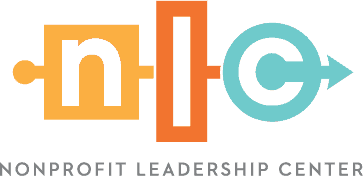Picture this: You’re a nonprofit organization that does critical work to improve your community. You’ve identified a science-backed solution that will make a significant impact on countless individuals and families, but it requires parents, educators, business executives and community leaders to know about it and take action. It’s a big undertaking, but your team is up to the task. There’s just one problem … your annual communications budget is a meager 0.02% of your total annual budget — barely enough to get some brochures or signage printed.
This is a real-life example from a nonprofit I recently met with that epitomizes the age-old adage of marketing on a shoestring budget. For some nonprofits, their communications outlook is not so dire. But for most of us in the nonprofit sector, we consistently struggle with the need for more communications and marketing resources than our budgets allow. So, how do we create breakthrough communications on a budget in a world where the only messages that seem to rise to the top have paid advertising behind them?
A team of Nonprofit Leadership Center partners and leaders set out to answer this question at the Public Relations Society of America’s Sunshine Conference — the premier annual conference for communications professionals from across the state of Florida.
Led by United Way Suncoast CEO Jessica Muroff, NLC’s former director of education and communications Jennifer Dodd and yours truly (Jesica D’Avanza, founder and chief strategy officer at Round Square — a brand and communications consultancy for nonprofits), we offered practical tips and advice for nonprofit communicators on a budget. From our breakout room to your boardroom, here are the top 10 takeaways to help improve your nonprofit communications and break through on a budget.
Top 10 Ways to Improve Your Nonprofit Communications & Break Through on a Budget
1. Resist the urge to run toward tactics.
In our increasingly competitive giving environment, the sense of urgency to generate funds today often requires immediate action that can lead to tactical, transactional activities over thoughtful and targeted strategies. While social media campaigns, e-newsletters and community events are important, you’ll be most effective when you give yourself the time and space to understand your audiences, build and strengthen relationships with them and develop communications designed to tap into what will move them to action. The most powerful thing nonprofits can do to improve their communications is to focus. By honing in on what’s most important to achieve and most likely to generate results, you can focus your limited time and resources to drive strategic outcomes rather than sprinkling them across many different priorities with reduced impact.
2. Ask your audiences about themselves.
The key to effective communications is understanding what motivates or limits your audiences’ engagement. But you don’t need a robust market research budget to communicate with greater impact. Take time to sit down with a cross-section of your various stakeholders and ask them what their current perceptions are of your organization, what strengths and challenges they see with your programming, what would inspire them to get or stay involved and what would prevent them from engaging. Qualitative interviews with as few as 10 individuals who reflect your audience base can reveal important themes and insights to inform your messaging and communications strategies. Doing this on an annual basis ensures you are having a regular dialogue with those you serve and keeps a pulse on your ground game.
3. Define and articulate impact.
This sounds like a no-brainer, but many nonprofits struggle to demonstrate their impact beyond counting the numbers of individuals served or dollars invested. Sit down with your leadership team to define what impact truly looks like for your organization and how you can measure it. How are people benefiting from your services? How have their lives changed? How has your impact contributed to overall community improvements? Whose stories can you identify and elevate to make that impact real? Donors and supporters want to understand the impact they’re making. Make sure the way you’re measuring and messaging about it is a story that’s clear and compelling.
4. Think about communications beyond a department.
Communications is not just the responsibility of your communications and marketing department; every person that works at your organization is responsible for helping convey what you do, how you do it and why it matters. Likewise, your brand should be a guide for every decision your organization makes and every action it takes. Think about communications as much broader than a single individual or department. What can every staff member and volunteer do to contribute to your story?
5. Remember, it’s about them — not us.
As hard as this may be to hear, few people really care about your organization — they care about how your organization benefits them, their families and their community. Today, people say they wouldn’t care if 77% of brands disappeared (Havas Group). As nonprofits, we must lead with our audiences and not ourselves. Tapping into universal truths that everyone can relate to and leading with your audiences’ needs is the first place to look to drive relevance and resonance.
6. Create a year-long road map.
One of the simplest things you can do to ensure a more effective communications approach is to create a strategic content calendar to guide all your communications efforts. This spreadsheet maps what’s happening in the world around you, popular moments in time, sector or service-related issues/opportunities, local community events and your organizational offerings. By mapping out a flow for content and messaging topics in advance, you can ensure the right mix of communications — from emerging news and organizational updates to community-curated content, questions that spark conversation and simple ways to “surprise and delight” your audiences. A strategic content calendar can help ensure your communications channels are telling a strategic story, week to week and month to month, and are not just a catch-all for everything you need to say and could possibly ever say.
7. Use other people’s megaphones.
Lean on community partners, business sponsors and other influencers to help you extend your messages in ways you would not be able to do on your own. From strategic collaborations with the business community to digital influencers who have a personal experience with your mission, identify authentic voices and companies that believe in your mission and can elevate your work without the added cost. Likewise, it’s imperative that you find ways to add value to your partners — from introducing them to new audiences and recognizing them on your channels to being a trusted thought leader for information and guidance in your area of expertise.
8. Don’t underestimate the power of a hand-written note.
What’s old is new again, and that’s certainly true when it comes to the power of human connection. The Girl Scouts of West Central Florida sends hand-written congratulatory notes to women who are honored throughout the year in the community. Finding ways to honor female leaders who are doing amazing things in the community is an authentic extension of the organization’s brand to develop strong girls who become strong women. Showing you care is a simple, yet powerful way for your senior leaders to build relationships with other community leaders and start conversations that can lead to collaboration and community change.
9. Start from within.
So often when it comes to communications, nonprofits think about how we’re communicating externally. But the best communications start from within our own teams. Nonprofit leaders must cultivate a culture that elevates customer experience, consistent communications and authenticity. When everyone is on the same page and they understand the power their role can play in your larger story, your internal stakeholders become your most powerful ambassadors. Make this an ongoing, regular part of the dialogue that extends from day one onboarding to weekly and monthly team meetings and all-staff retreats.
10. Let go of what’s not serving you.
With limited time and resources, you can’t do everything. Focus on where you can have the deepest impact. Look at your online data and analytics and focus your efforts on the communications channels and content topics that are driving traffic and engagement. Consider de-prioritizing the ones that are not. Don’t just be on Instagram because everyone else is. Make sure you’re being intentional about the time and strategies you have and make every communication count.


